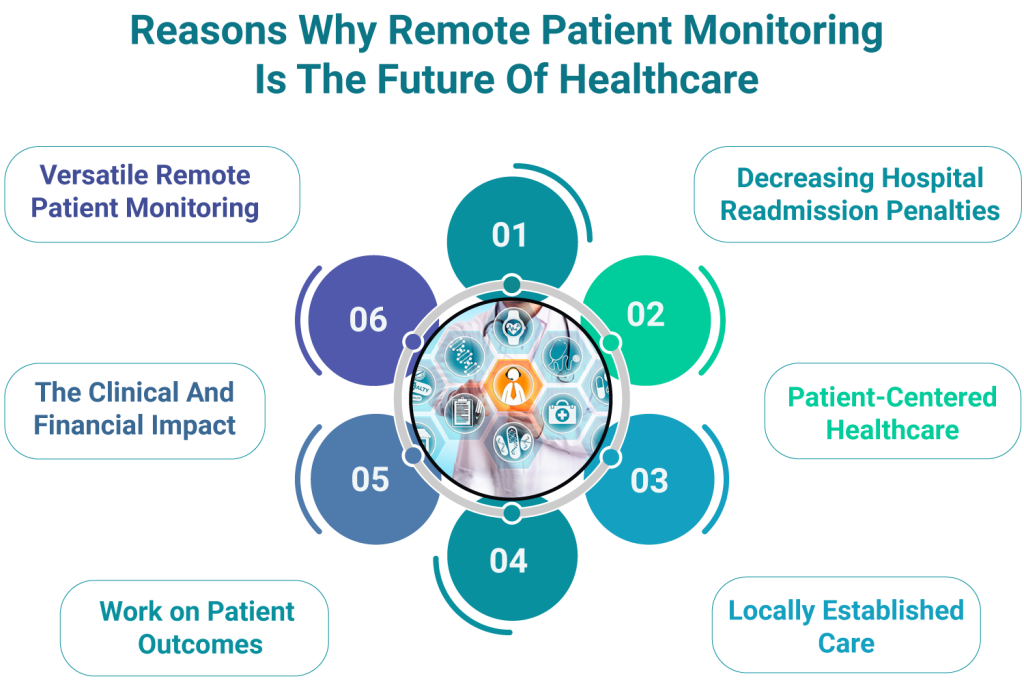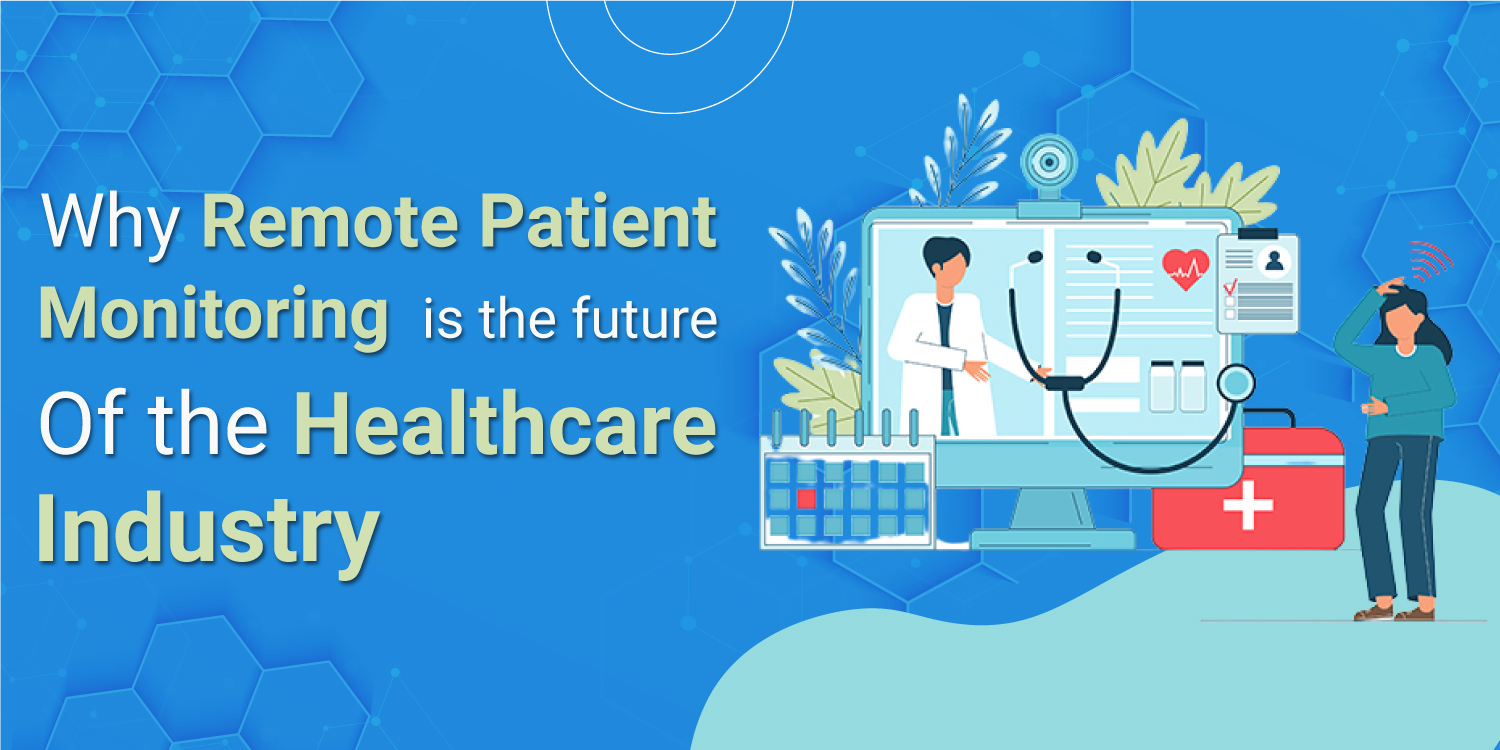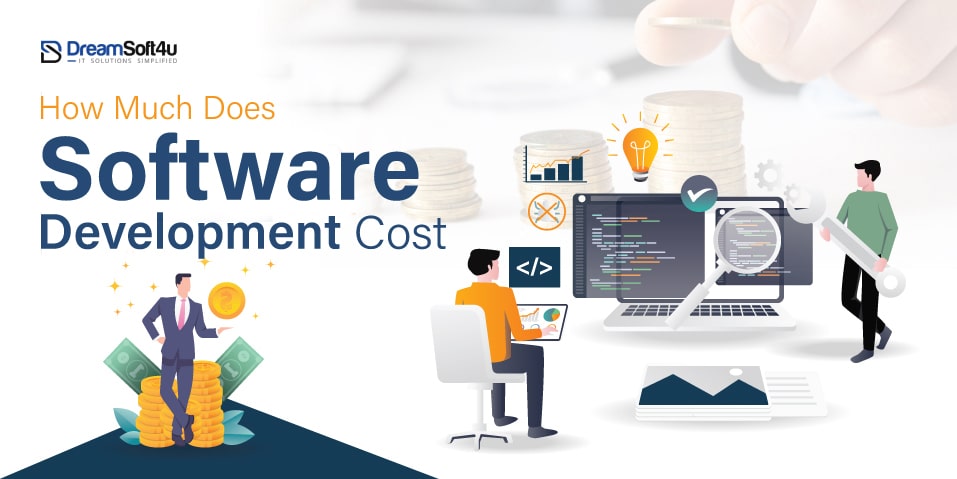The health industry is setting up a benchmark in the technology field after the COVID-19 pandemic. In the disturbing environment where people are unable to get suitable medication due to one or another reason, the medical industry is looking for an alternative through which they can reach out to patients in severe situations. The emergence of remote patient monitoring systems created an open platform for patients and doctors to connect and talk about the situation and healthcare issues.
However, investors and healthcare facilities believe that the remote monitoring system has a massive future in the healthcare industry. If you look at the current status of remote patient monitoring systems, multiple healthcare facilities and patients are connecting through a common platform. Additionally, people can get care for their chronic diseases and general health-related queries through remote monitoring integrated software. So, let’s understand the scope and the future of the remote patient monitoring system in the healthcare industry and how it can create an impact on digitalisation and bring healthcare revolution.
Table of Contents
ToggleWhat is Remote Patient Monitoring (RPM)?
Remote Patient Monitoring is a tool to analyze a patient’s vitals when at home closely. It requires software to run on the patient’s smartphone and good internet connectivity. This tool has undoubtedly collected immense fame during and after the pandemic. According to experts, RPM is the new normal in the healthcare technology trends.
It is the primary subsidiary of the telemedicine market across the globe. According to some Telehealth professionals, The specific remote patient monitoring statistics were estimated to have a global value of $71.9 billion in 2023. Experts estimate that the market value will rise to $207.5 billion by 2028, with a 23.6% CAGR. The solution is booming significantly and has leveraged Telemedicine app development at full pace. Therefore, we can assume that Remote Patient Monitoring might be the future of healthcare.
How Does RPM (Remote Patient Monitoring) Work?
RPM results from advances across a couple of regions generally converging brilliantly. These are the absolute most excellent patterns that have made RPM conceivable.

1. Internet of Things
IoT is prepared to reform every industry, and the medical services industry is no particular case. The move towards a more brilliant, more associated world considers more astute and more associated medical services arrangements.
2. Wearable Tech
From Google Glass to smartwatches to e-materials (shrewd garments), wearable tech is another pattern that isn’t disappearing any time soon.
Wearable gadgets that permit patients and specialists to screen vitals like your pulse has been around for years. The innovation has kept on advancing to the point that something lighter and more modest than most wristwatches can now screen the whole biological system inside your body and send that information remotely continuously. Healthcare app development companies are transforming these devices by developing advanced software to give precise data.
3. Big Data
Each of that information needs to head off to someplace. Luckily putting away and handling vast information measures is presently a genuinely regular practice because of the expansion of ‘Huge Data.’
Merging and dissecting prosperous information from one individual or a gathering considers therapies to be recommended rapidly, even presciently, and for AI to assist with making more powerful computerized clinical consideration plans.
Two recognizable patterns have made remote patient monitoring services an important need these days. These are a maturing populace and a more prominent spotlight on persistent driven care.
An undeniably great extent of old individuals puts new difficulties on clinical frameworks worldwide, however, especially in a desperate NHS.
Simultaneously, the medical care industry is gradually moving its concentration away from satisfying portions and targets and to the patient’s well-being. This patient-driven approach places care on the singular upfront and has implied that drives pointed toward working on the patient experience, similar to RPM, are turning out to be increasingly important.
We help you leverage a top RPM system for your healthcare firm
Connect now with DreamSoft4u
What Are The Perks Of Remote Patient Monitoring (RPM)?
The real advantage of RPM will invest in some opportunities to understand. Yet, the innovation is ready to give an entire scope of upgrades to all regions of the medical care area.
- The patient experience – given the decision of whether to remain in a medical clinic or at home, it’s difficult to accept that anybody would pick an emergency clinic assuming they realized they would get a similar degree of care and observing from the solace of their own home.
- The strain on medical clinics and specialists – the diminished interest for beds, food, and specialists’ time on rounds will let loose assets in clinics convey a better administration to those who must choose to remain in a medical clinic.
- More prompt and exact findings – because it’s not just about having the option to remain at home instead of in the clinic. It’s about the constant accessibility of rich and dependable information about your condition and the responsiveness to this information from frameworks and clinical experts being such a ton better than it is currently.
- Availability of medical care – for those unfit to take off from their home, who live in regions with unfortunate public vehicle joins who could battle to get to an emergency clinic or specialists, RPM gives a practical other option.
Reasons Why Remote Patient Monitoring Is The Future Of Healthcare?
So here comes the other benefits of remote patient monitoring that prove that RPM will be the future of healthcare. Not only this, it will be the new dawn of healthcare development.

1. Patient-Centered Healthcare
Remote patient monitoring device shows restraint-focused care wherein patients effectively check their clinical treatment under the protection of experienced well-being experts. The doctors then, at that point, break down the information and give well-being suggestions to the patients in light of their circumstances reflected in the information.
RPM creates better commitment for the patients. The lift in commitment expands the propensity of patients to assume command over their well-being in their grasp. Embracing far-off persistent observing administrations assists the patients with keeping their very own well-being without any help.
2. Decreasing Hospital Readmission Penalties
Throughout the long term, studies on Remote patient checking have demonstrated that it lessens expenses and helps further development through extensive well-being results. It not only brings down the pace of hospitalizations by as much as 40% but additionally helps the yearly reserve funds of $6,500 per patient.
3. Locally Established Care
Remote Patient Monitoring gives locally situated care to the patients who need ceaseless well-being observing inferable from their primary ailment. RPM has ended up being a lifeline in the troublesome seasons of the worldwide pandemic.
4. Work on Patient Outcomes
The rationale for remote patient monitoring is further developed for individual well-being results. Medical care labourers likewise benefit through this office by higher staff usefulness and a decrease in the general expense and considerably more.
5. The Clinical And Financial Impact
The Financial Times distributed a report on the advantages of remote patient monitoring. Assuming executed for a vast scope, RPM could save the United States billions of dollars each year. It is assessed to be around $6 billion yearly.
6. Versatile Remote Patient Monitoring
A portable application interface gathers information from intelligent sensors to communicate it to medical services suppliers. The mHealth app development helps users to access data and the submitted information, admittance to valuable substance, polls, updates, and specialist patient cooperation instruments like text, sound, video, etc.
Conclusion:
In summary, there is a great deal of promise for remote patient monitoring systems (RPMS) in the future. RPMS has the potential to play an increasingly bigger role in patient care as healthcare environments and technology change. The possibilities are endless, ranging from encouraging preventative healthcare practices to using artificial intelligence to analyze data more deeply. Healthcare professionals may now deliver more proactive and individualized care while also empowering people to take control of their health thanks to technology. In the future, cost-effectiveness, platform-to-platform data integration, and universal accessibility will probably become more important. We can build a more connected, preventative healthcare system by providing healthcare consulting services to people to have healthier, more satisfying lives by utilizing the potential of RPMS.
FAQs
Q1. What is Remote Patient Monitoring (RPM), and how does it work?
RPM gathers patient health data outside of a conventional clinical environment by using technology. Patients monitor their vital signs, blood sugar levels, and other health indicators using wearable technology, smartphone apps, or home monitoring kits. After that, this information is safely sent to healthcare specialists for remote observation and evaluation.
Q2. Why is RPM considered the future of healthcare?
RPM provides several advantages:
- Better patient outcomes: It allows for more frequent observation, which enables prompt management and early identification of possible health problems.
- Improved chronic disease management: Gives patients with long-term illnesses the tools they need to take better care of themselves at home.
- Reduced healthcare costs: Proactive care lowers avoidable ER visits and hospital readmissions.
- Enhanced patient involvement: Enables patients to participate more actively in their medical treatment.
- Better accessibility to care: Gives patients who live in rural locations or have limited mobility access to healthcare.
Q3. What are some of the challenges associated with RPM implementation?
Challenges include:
- The price of technology and continuous monitoring charges.
- Privacy and data security issues.
- Ensuring patient participation and adherence to RPM systems.
- RPM data integration with the current IT infrastructure in healthcare.
- More work has to be done on RPM service reimbursement models.
Q4. What role does RPM play in a preventive healthcare strategy?
RPM facilitates continuous health data collection, enabling healthcare providers to detect health problems early on. This makes it possible to take preventative action, which may avert problems and enhance patient outcomes overall.
Q5. Does RPM raise any security concerns?
Data privacy and security are crucial. To protect the privacy of patient data, RPM systems should use strong encryption and follow HIPAA guidelines.
Q6. What does RPM technology’s future hold?
RPM has a bright future. Developments in wearable technology, artificial intelligence for data analysis, and integration with electronic health records (EHR) are anticipated to further improve its efficiency and accessibility, creating a more cohesive and effective healthcare ecosystem.























